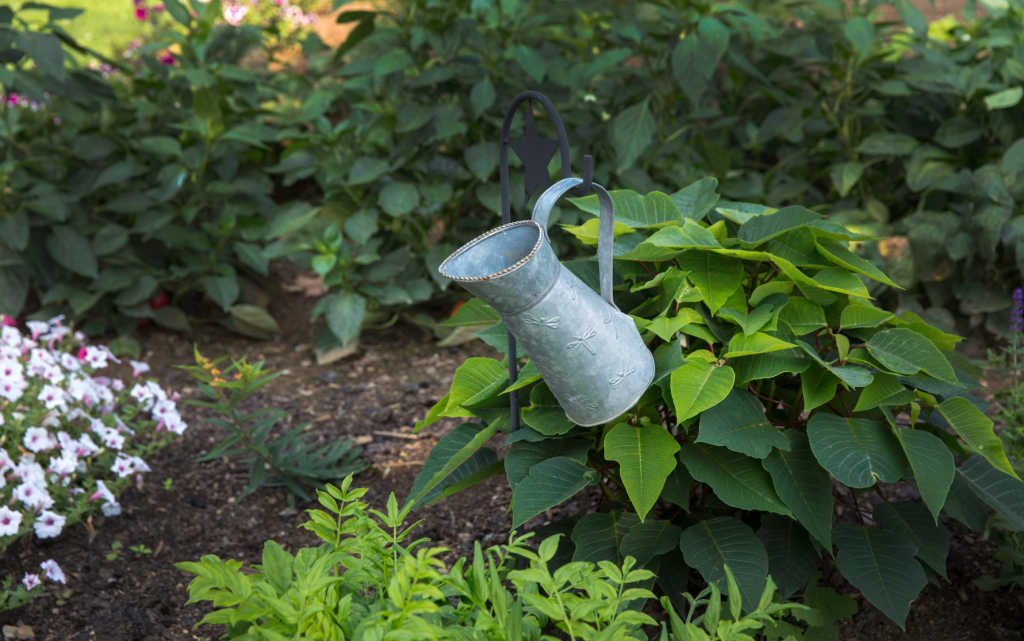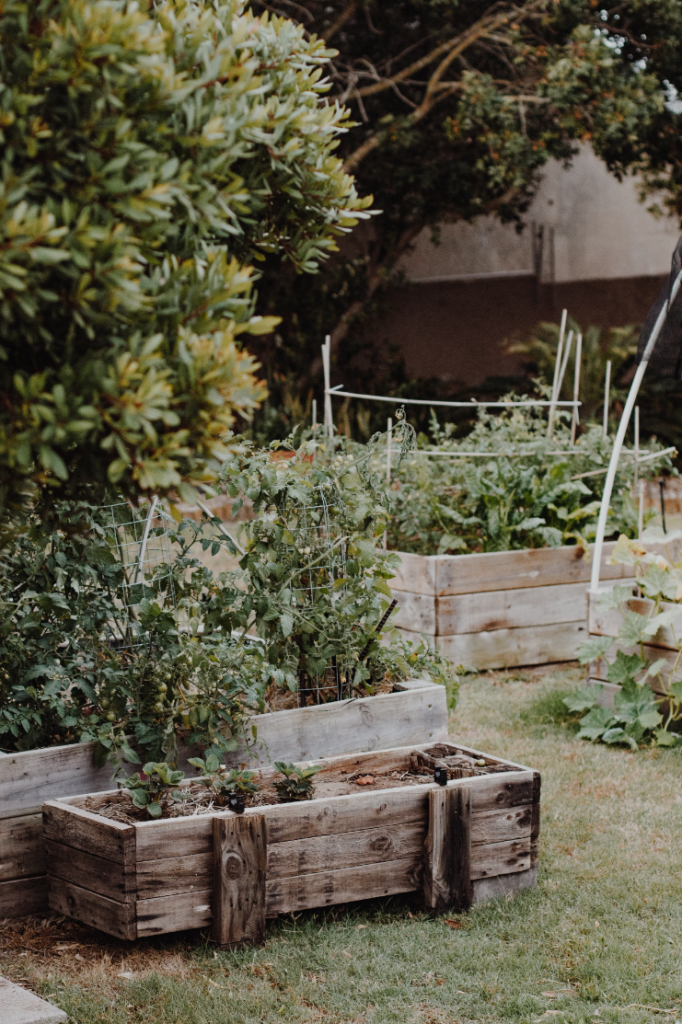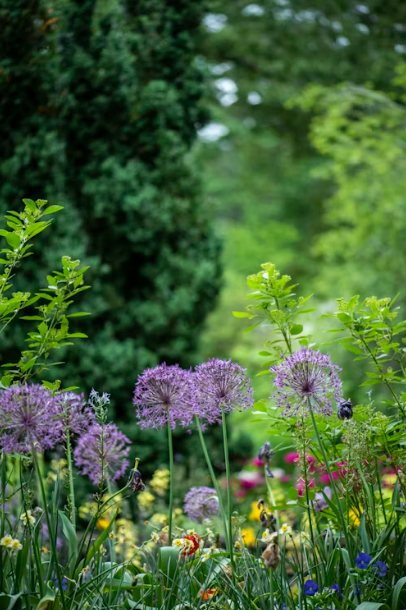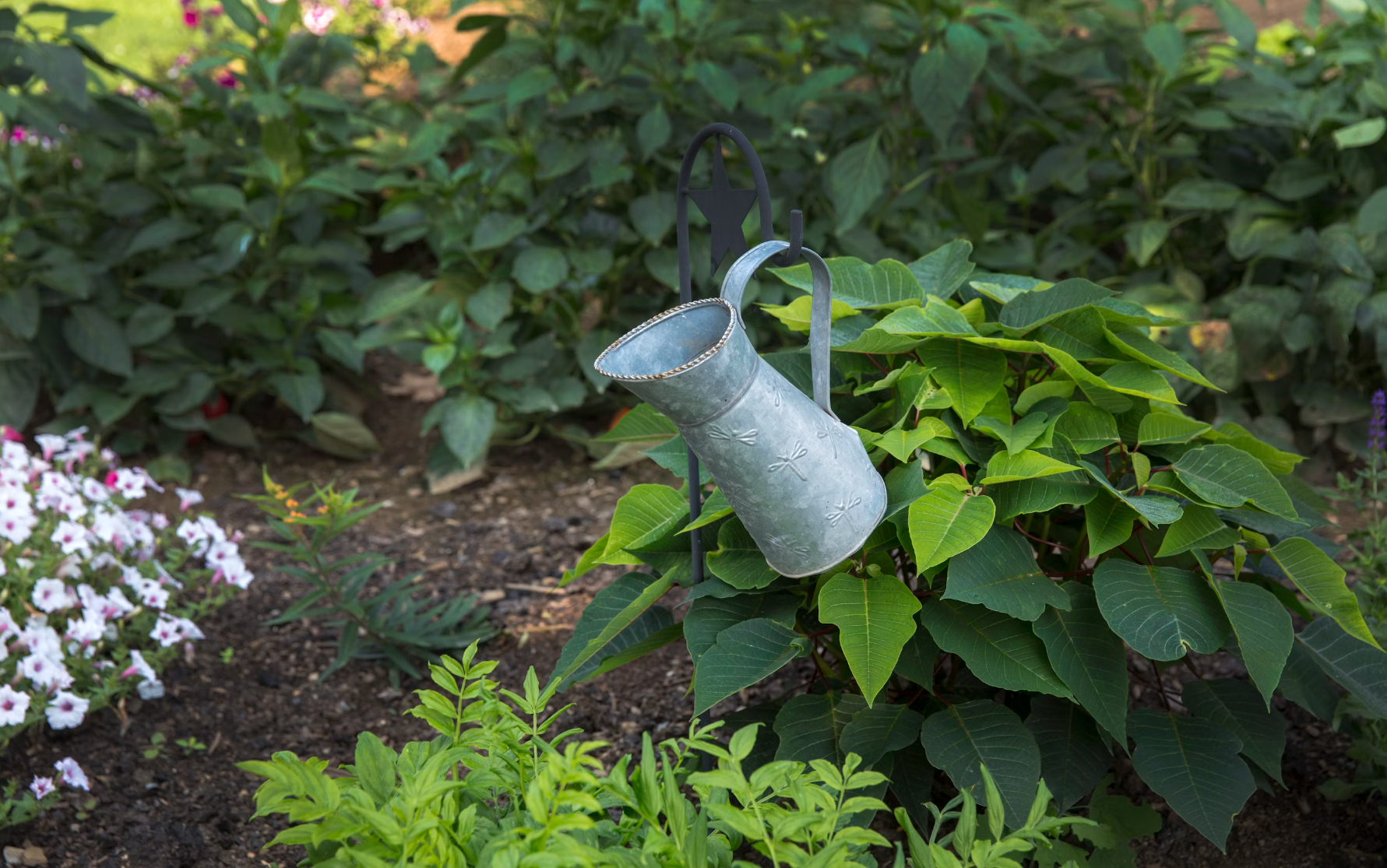Landscaping a small yard can present unique challenges, but with the right approach, even the tiniest spaces can be transformed into beautiful and functional areas. This article will explore strategies to maximize your small outdoor spaces without compromising aesthetic appeal or practicality.
How can you turn a limited yard into a lush, inviting extension of your home? By employing clever design ideas and making smart use of available space, homeowners can create stunning landscapes that not only enhance their property’s value but also provide a peaceful retreat right outside their door. Learn how to make the most of your small yard.
1) Vertical Gardens
Transform small yards into lush, green spaces with vertical gardens. These gardens maximize limited areas by growing plants upward instead of outward. They can be created using wooden pallets, trellises, or wire mesh panels on existing fences or walls.
Vertical gardens not only save space but also add visual interest and depth. They are perfect for growing a variety of plants, from decorative flowers to useful herbs and vegetables. For instance, climbing strawberries or grapes can be grown on trellises, providing both beauty and fresh produce.
Using old furniture, like dressers, is another creative way to implement vertical gardening. By removing drawers or using the structure as a whole, you can create unique planters that conserve space and add a rustic charm.
Consider installing green walls of container plants. These can be attached to fences, exterior walls, or freestanding structures. This method turns unused vertical space into productive and aesthetic garden areas.
For more ideas and inspiration, explore various vertical garden designs. These methods demonstrate how to enhance small spaces effectively. Another great source for unique ideas on this topic is Bob Vila’s guide.
2) Container Gardening
Container gardening is a great way to maximize space in small yards. It allows for flexibility, as you can move plants around to best suit your layout and sunlight availability. Additionally, it offers an opportunity to grow a variety of plants, including flowers, herbs, and vegetables.
A major advantage of container gardening is its adaptability. Containers can be placed on patios, balconies, or even hung on walls. This makes it possible to create a green space virtually anywhere, regardless of yard size.
Consider incorporating different sizes and styles of containers to add visual interest. Combining pots of varying heights can create a dynamic and appealing garden. Additionally, using containers made of different materials like clay, metal, or wood adds texture and variety to the landscape.
For those interested in colorful blooms, containers can be filled with annuals and perennials that thrive in pots, such as petunias, marigolds, and geraniums. Edible plants, such as tomatoes, peppers, and herbs, also do well in containers, making it easy to have a kitchen garden close at hand.
Proper drainage is crucial for container gardening. Ensure your containers have drainage holes to prevent water from stagnating at the roots. This helps maintain the health and growth of your plants, particularly in small spaces where airflow might be limited.
To gather more ideas, you can visit The Spruce for a variety of container gardening inspirations. This approach not only maximizes space but also brings beauty and functionality to small yards.
3) Herb Spiral
An herb spiral is a clever way to maximize space in a small yard. It consists of a spiral-shaped bed that rises towards the center, creating different microclimates within a compact area.
This design allows for a variety of herbs to be grown together, each in an ideal environment. Herbs needing well-drained, drier conditions, such as rosemary and thyme, can be planted at the top.
On the other hand, herbs that prefer more moisture, like parsley and chives, fit well at the bottom. This natural gradient in moisture levels ensures each plant gets optimal conditions.
Building an herb spiral involves using stones or bricks to create the spiral walls. Larger stones should be used at the base, gradually using smaller ones as the spiral rises. Fill in gaps with gravel or rubble for stability.
A typical herb spiral can be about three feet in height and six feet in diameter. This small structure is quite efficient and adds a visually appealing element to the garden. The design can include an optional small pond at the base to collect excess water.
Implementing an herb spiral not only saves space but also makes harvesting herbs much more convenient in a small yard. It’s a practical and aesthetically pleasing solution for urban gardening. For more details, see how to build an herb spiral.
4) Miniature Water Features
Miniature water features are an excellent way to add tranquility to small yards. They come in various forms such as fountains, ponds, and cascading waterfalls, offering both aesthetic appeal and the soothing sound of flowing water.
One popular option is the Carrera Oval Fountain. Its sleek, oval shape and durable cast stone construction make it visually pleasing and long-lasting.
For a DIY touch, consider creating a mini garden pond. Using a compact container, fill it with water and add aquatic plants. This simple addition can transform small spaces without requiring significant maintenance.
Mixing different materials can enhance the visual impact of your water feature. For instance, using stone, metal, and glass elements creates a dynamic look that can be a striking statement in any garden. This approach ensures your water feature complements the surrounding landscape effectively.
Adding a narrow pool with a monochromatic color scheme can also create a bold visual element. By lining the pool with clusters of plants, such as evergreens and hostas, you can achieve a symmetrical and relaxing spectacle suitable for any small yard.
By integrating these miniature water features, small yards can become serene retreats with minimal effort.
5) Pebble Pathways
Pebble pathways are an excellent choice for small yards. They add texture and color, enhancing the aesthetic appeal without overwhelming the space. Pebbles can create a natural, earthy look that complements various garden styles.
Pebble pathways are easy to install and maintain. Simply lay a base layer of sand or gravel, then spread the pebbles evenly. This ensures stability and prevents weed growth.
Using pebbles also helps with drainage. Water easily passes through, reducing puddles and erosion. This makes them practical for areas with heavy rainfall or poor drainage.
Pebbles come in various colors and sizes, allowing for customization. You can mix different shades to create patterns or blend them for a more uniform look.
Placing larger stones or stepping stones within the pathway can add visual interest and provide stable footing. This combination creates a dynamic and functional walkway.
Pebble pathways can be used to connect different parts of the garden. They guide visitors through the space and create a sense of flow. For more inspiration, consider exploring ideas on landscaping with pebbles.
Integrating plants along the edges of the pathway can enhance the look. Choose low-growing ground covers or small shrubs to frame the path and soften the edges.
Pebbles can also be used around water features. This adds continuity and a cohesive design element to the yard, as suggested here.



Design Principles for Small Yards
Focusing on space optimization and focal point creation can significantly enhance the functionality and aesthetics of small yards.
Maximizing Space
Effective use of space is crucial for small yard design. Incorporating vertical gardening techniques, such as utilizing trellises and wall-mounted planters, can open up horizontal space. Techniques like these can be particularly useful when incorporating shrubs and climbers against unused fences, creating an expansive feel (example).
Furniture selection is another vital aspect. Opt for multi-functional pieces like benches with storage or foldable tables. This helps in keeping the space flexible and clutter-free. Also, consider pathways and patios made with permeable materials to maintain an airy atmosphere.
Strategic lighting can also maximize space by highlighting different areas and creating depth. Use lanterns or string lights to illuminate paths and seating areas without overwhelming the space.
Creating Focal Points
Creating focal points directs the viewer’s attention to specific areas, making the yard feel more intentional and visually appealing. A pergola can serve as a strong focal point, drawing the eye upward and enhancing the sense of vertical space (example).
Consider incorporating water features like small fountains or birdbaths. These can add both visual and auditory interest, enhancing the yard’s ambiance. Raised garden beds can also act as focal points while adding functional planting space.
Using bold, contrasting colors in planting schemes or furniture can attract attention to designated areas. Decorative elements like sculptures or artistic planters contribute to creating unique focal points within the yard.
Choosing the Right Plants
Selecting plants for small yards involves choosing species that offer aesthetic appeal while being easy to maintain and maximizing vertical space to create a lush environment. Here’s how to make the right choices.
Selecting Low-Maintenance Plants
For small yards, low-maintenance plants are ideal. They require minimal care, allowing for an attractive landscape without constant upkeep. Sedum, such as lemon coral sedum and dragon’s blood sedum, is an excellent choice. These low-growing succulents thrive in a variety of conditions and provide vibrant ground cover.
Liriope, another drought-tolerant plant, can be used as edging or ground cover. Known for its grass-like appearance and purple flowers, it’s both hardy and visually appealing.
Plants like these reduce the need for frequent watering, pruning, and pest control, making them practical for those with busy schedules. Incorporating mulch like gravel around these plants can keep their foliage clean and further reduce maintenance needs.
Using Vertical Space
In small yards, utilizing vertical space can add depth and interest. Vertical gardening techniques, such as using climbing plants and wall-mounted planters, make the most of limited space.
Consider climbing plants like ivy or clematis to cover fences or walls, adding greenery and color. Vertical planters or trellises can hold flowering plants or herbs, creating a layered effect.
By planting against underused fences, one can create the illusion of a larger area. Techniques such as these provide more planting opportunities without taking up ground space, ultimately maximizing the visual impact of a small yard.
Incorporating Functional Elements
Incorporating functional elements into small yard landscaping can maximize space and enhance usability. Below are specific recommendations for adding seating areas and water features, which can transform a small yard into a comfortable and inviting outdoor space.
Adding Seating Areas
Creating seating areas in a small yard can provide a comfortable space for relaxation and socializing. Benches and built-in seating options are ideal for optimizing space.
Folding chairs or stackable furniture offer flexible arrangements that can be easily stored away when not in use. Think about corner benches that use unused spaces and provide ample seating without crowding the area.
Use weather-resistant materials like treated wood, metal, or synthetic wicker to ensure durability and ease of maintenance. Adding cushions and throws, made from outdoor fabrics, can enhance comfort and add a touch of personal style.
Placing seating areas near shade-providing plants or under pergolas will also provide a cool spot to relax during warmer months.
Incorporating Water Features
Water features can add a sense of tranquility and a focal point to small yards. Compact water elements like a bubbling water wall, miniature fountains, and small ponds are excellent choices.
Even a simple birdbath can provide visual interest and attract wildlife. For a striking modern element, consider a geometric water feature with clean lines and a minimalist design.
Placement is crucial – install water features where they can be easily seen and heard without taking up too much space. Ensure that the water elements are scaled appropriately for the yard’s size to avoid overwhelming the area.
Solar-powered options are eco-friendly and reduce the need for complex electrical work. The sound of flowing water can mask neighborhood noise, creating a peaceful atmosphere.
Frequently Asked Questions
This section addresses common questions about landscaping small yards, focusing on achieving a low-maintenance design, budget-friendly ideas, and options for yards without grass.
How can I achieve a low-maintenance landscape in a small yard?
Incorporate drought-tolerant plants that don’t require frequent watering. Use native plants adapted to local conditions. Mulch helps retain soil moisture and suppress weeds.
What are some budget-friendly landscaping ideas for a small backyard?
Consider container gardening with affordable pots. Use repurposed materials, like old bricks, for paths. Plant perennial herbs, which come back every year and require less investment over time.
What landscaping options are available for small yards with no grass?
Opt for vertical gardens using walls or fences. Place potted plants on shelves or hang them. Pebble pathways offer a neat and clean look without maintenance.
How can I design a modern landscape for a small space?
Utilize clean lines and minimalist designs. Combine concrete or metal planters with geometric arrangements. Select plants with sculptural qualities to enhance the modern aesthetic.
In what ways can I make the front of my house appealing through landscaping?
Create a welcoming entrance with a small hedge or low fence. Plant vibrant flowers along a pebble pathway leading to the door. Use symmetrical plantings to frame the front entrance.
What are some simple landscaping ideas to make a small yard look more spacious and nice?
Incorporate mirrors in the garden to create an illusion of depth. Use light-colored paving materials. Plant in layers, with taller plants at the back and shorter ones in front, to create a sense of depth.

